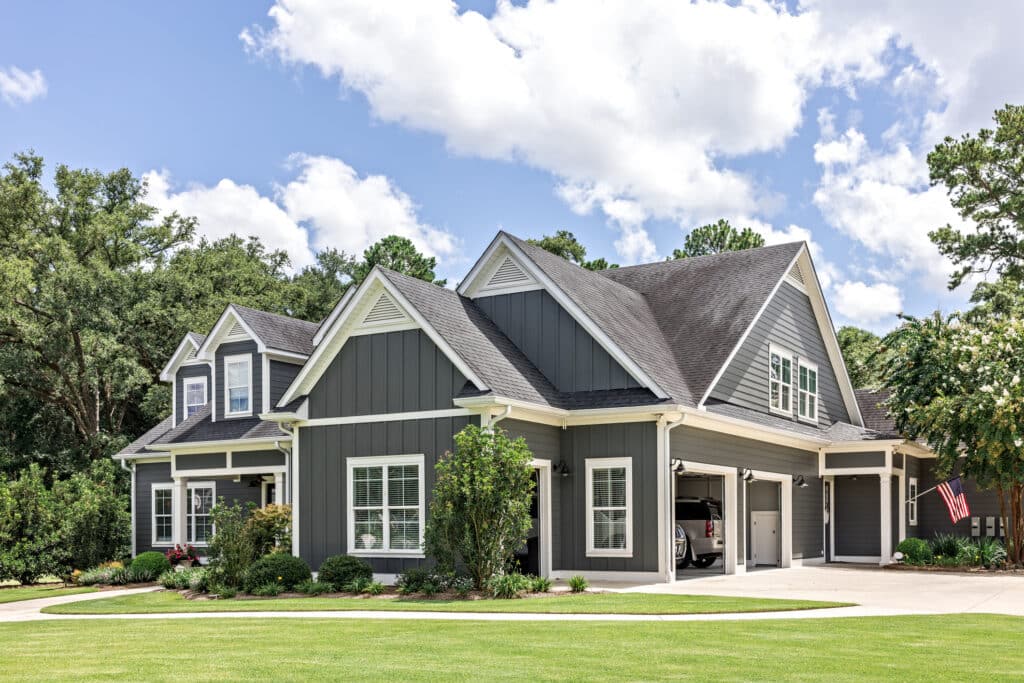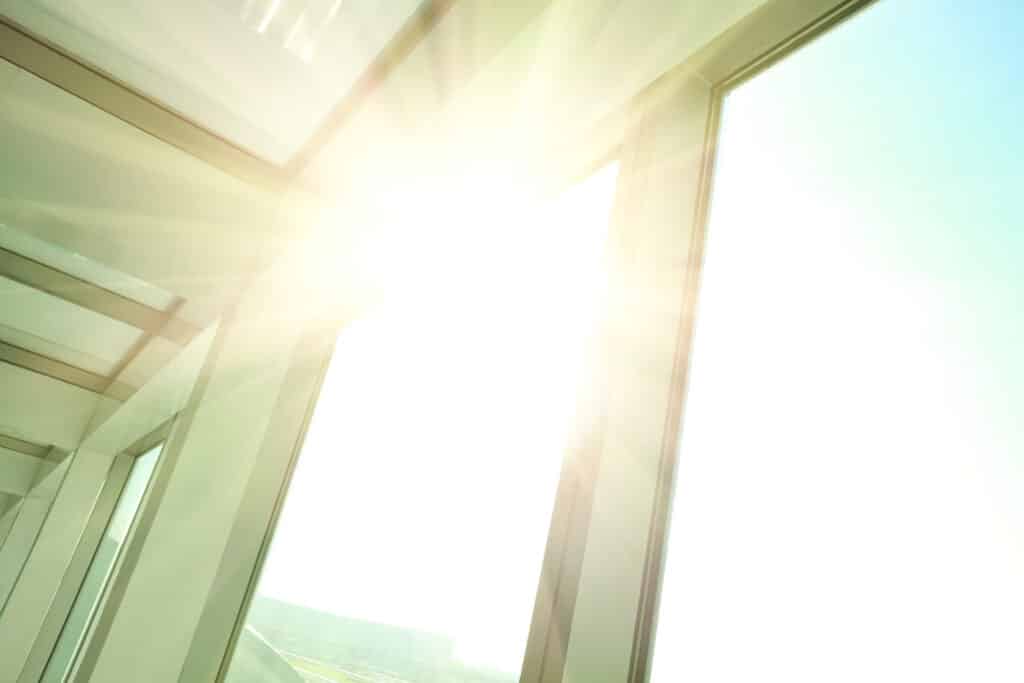
Choosing the Best Siding Color for Sunlight Reflection
Are you wondering how the color of your home’s siding could help keep it cooler? The right siding color doesn’t just make your home look good; it also affects how much sunlight and heat your home absorbs.
For those living in sunny spots like Dallas and Fort Worth, TX, choosing the best color for sunlight reflection can make a noticeable difference in comfort and energy bills. In this guide, we’ll explore the best siding color choices to keep your home looking stylish and feeling cool all year round.
Understanding the Importance of Siding Color for Sunlight Reflection
The siding color you choose for your home does more than just add style; it can significantly affect how much sunlight your home absorbs or reflects. By selecting a color that reflects sunlight rather than absorbing it, especially in sunny areas like Dallas or Fort Worth, TX, you can help keep your home cooler and reduce your energy bills.
How Siding Color Affects Your Home’s Temperature
Color plays a huge role in temperature control, as darker colors tend to absorb sunlight, while lighter colors reflect it. This means that homes with dark-colored siding may feel warmer inside, especially during sunny days, which makes it harder to keep the home cool.
In areas with high sun exposure, like Texas, light-colored siding reflects more sunlight, which can help keep your home cooler without relying heavily on air conditioning. This approach not only enhances comfort but also contributes to a more energy-efficient home.
Benefits of Choosing the Right Siding Color
There are several perks to choosing a siding color that reflects sunlight:
- Energy Efficiency: Reflective siding colors keep your home cooler, lowering your need for constant air conditioning.
- Improved Comfort Indoors: With less heat absorption, your home stays naturally cooler, making it more comfortable inside.
- Lower Cooling Costs: Since you won’t need as much air conditioning, you’ll likely notice a drop in those monthly energy bills.
Selecting the right siding color doesn’t just make your home look appealing—it’s also a smart move for keeping your living space cool and your energy costs down.

Factors to Consider When Choosing a Siding Color
Picking the best siding color for sunlight reflection involves considering more than just style. To make the best choice, you’ll want to factor in your climate, the amount of sun exposure your home receives, and even the look of your neighborhood. With the right color, you can maximize the comfort of your home while maintaining a look that complements your surroundings.
Climate and Sun Exposure
Your local climate and the amount of direct sunlight your home gets can strongly influence which siding color will work best. In hot and sunny climates like those in Dallas and Fort Worth, TX, lighter colors can be a lifesaver because they help reflect sunlight, keeping your home cooler.
On the other hand, homes in cooler climates may benefit from darker siding colors, which absorb more sunlight and can help trap warmth during colder months. Areas with high sun exposure will benefit most from lighter colors, which are better at bouncing off sunlight and keeping the indoor temperature down.
Home’s Architectural Style and Neighborhood Aesthetics
When choosing a siding color, it’s important to think about how it will look with your home’s architectural style and the general aesthetic of your neighborhood. Certain styles, like Victorian or farmhouse, may naturally lend themselves to certain color schemes, such as lighter or muted tones, which also happen to reflect sunlight well.
Additionally, take a look around your neighborhood to see the colors on nearby homes—choosing a color that complements your surroundings can boost your home’s curb appeal while keeping it unique. A well-chosen color can help your home blend in seamlessly with its environment while providing the reflective benefits you’re after.
Best Siding Colors for Sunlight Reflection
Choosing the right siding color can have a big impact on how much sunlight your home reflects, helping you control indoor temperatures, especially in sunny areas. Certain colors are more effective at reflecting sunlight, which means your home stays cooler naturally and relies less on air conditioning. From light to modern reflective shades, here’s a breakdown of the best options to help you pick the ideal color.
Light vs. Dark Colors: Which Reflects Sunlight Better?
When it comes to sunlight reflection, lighter colors are the clear winner, as they bounce more sunlight away, reducing the amount of heat that gets absorbed. Light-colored siding like white or pale gray can reflect a significant portion of sunlight, helping keep indoor temperatures lower even on hot days.
However, darker colors, while stylish, tend to absorb more heat, which may not be ideal in warm climates but can be beneficial in colder areas. For those living in hot regions, light-colored siding offers a practical choice, keeping the home cooler and making energy use more efficient.
Popular Light-Colored Siding Options for Sunlight Reflection
If you’re aiming to boost sunlight reflection, popular light siding colors are a great place to start. White siding is one of the best choices for maximum reflection, deflecting most sunlight and keeping interiors cooler.
Light gray offers a more subtle, modern option that also reflects well without being overly bright. Shades like beige and tan can give your home a natural, warm look while still reflecting a good amount of sunlight. These colors balance style with functionality, helping you maintain a comfortable indoor environment.
Modern Alternatives for Enhanced Sunlight Reflection
For homeowners seeking a fresh, modern look that still reflects sunlight, certain cool-toned colors are great choices. Light blue and soft green not only add character but also reflect sunlight effectively, making them good options for hot, sunny climates.
If you prefer warm shades, light versions of yellows and creams can give your home a welcoming feel while still offering decent sunlight reflection. These colors add variety to the usual light palette, combining the benefits of sun reflection with a unique, appealing appearance.
Combining Siding Colors for Style and Function
Choosing a siding color that reflects sunlight doesn’t mean you have to sacrifice style. With the right combinations, you can enjoy a stylish exterior that’s also functional.
Adding accent colors to shutters, trim, or doors can create a balanced, cohesive look while keeping sunlight reflection in mind. Here’s how to mix and match siding colors for both function and flair.
Using Accent Colors
Accent colors bring personality to your home’s exterior without compromising its sun-reflective benefits. For example, a light, reflective primary color can be paired with slightly darker shades on features like trim, shutters, and the front door, creating contrast and visual interest.
Cool-toned accents like charcoal gray or soft blue are great options, as they enhance curb appeal while absorbing minimal heat.
Additionally, choosing accent colors wisely allows you to introduce bolder elements without impacting your home’s overall energy efficiency. Thoughtful accents give your home unique character while keeping the majority of your exterior light and reflective.
Color Schemes that Work Well with Light Reflective Siding
Certain color combinations work exceptionally well with light-reflective siding, offering both beauty and practicality. For example, a light gray siding paired with white trim and dark gray accents provides a sleek, modern look that maximizes sunlight reflection.
For a warmer feel, beige siding combined with soft green accents and white trim creates a welcoming, energy-efficient style. Another classic choice is white or pale blue siding with navy blue accents, offering timeless appeal with functional benefits.
These combinations create a balanced look, with the primary color reflecting sunlight and the accents adding dimension and charm. Using darker accents sparingly ensures your home stays cool and comfortable without compromising style.
Tips for Choosing the Right Siding Color
Picking the perfect siding color takes a bit of thought, especially when you’re aiming for a balance of style, functionality, and long-lasting appeal. With a few practical tips, you can make a decision that fits your aesthetic goals while maximizing sunlight reflection.
Consider Long-Term Weather Impact
Your siding will face various weather conditions, so selecting a color that can handle sun, rain, and even wind exposure is essential. In sunny areas like Dallas or Fort Worth, TX, lighter colors are advantageous because they reflect sunlight, helping reduce interior temperatures and resist UV fading.
Darker tones might look striking, but they are more likely to fade quickly in high-UV regions, leading to more frequent touch-ups. Choosing a light, sun-reflective color not only keeps your home cooler but also helps it maintain a fresh, vibrant look over time. Additionally, lighter shades tend to show wear less, giving your home a clean, polished appearance year-round.
Test Colors with Samples
Using color samples can be invaluable in visualizing how your siding will look across different parts of your home. Try applying samples to various walls and observe them at different times of the day, as sunlight and shadows can greatly affect how colors appear.
Testing colors under morning, midday, and evening light can give you a realistic view of how they will look in all conditions. Samples also allow you to see how the siding color works alongside your trim, shutters, and other architectural elements, creating a harmonious and appealing exterior. This approach helps ensure you’ll be satisfied with the color, regardless of the time of day.
Consulting with a Professional
Collaborating with a siding professional can simplify your decision, as they offer valuable insights into materials and color options that suit your region’s climate. Experts can help you select colors that balance both aesthetic appeal and practical benefits like sunlight reflection and energy efficiency.
They can also advise on durable materials that resist fading, cracking, and other forms of wear, especially helpful in sun-prone areas. Professionals stay up-to-date on trends and can recommend timeless shades that will look fresh for years. Their knowledge can guide you to a siding choice that aligns with your vision and withstands environmental challenges.
Explore Complementary Accent Colors
In addition to your main siding color, accent colors can bring depth and character to your home’s exterior. Choosing complementary shades for shutters, doors, and trim can enhance your home’s style while maintaining sun-reflective qualities.
For example, pairing light siding with cool-toned accents, such as soft blues or grays, adds dimension without absorbing excessive heat. This approach also lets you add personality to your exterior without compromising the reflective benefits of lighter siding. A well-thought-out color scheme with tasteful accents can boost curb appeal and create a balanced look.
Think About Future Resale Value
The color of your siding can impact your home’s resale value, so it’s worth choosing a shade with broad appeal. Neutral, light colors tend to attract more buyers because they give the home a timeless, versatile look. Light shades also convey energy efficiency, a feature that can appeal to potential buyers interested in lower utility bills.
A color choice that remains stylish over time, with both functional and aesthetic advantages, can make your home more attractive in the market. By selecting a classic, sun-reflective color, you’re investing in your home’s future appeal and value.
Cost and Long-Term Considerations
While choosing the perfect exterior color might feel like a one-time decision, considering its cost and longevity can make a meaningful difference. The right color can save money on energy bills and maintenance over time, making it worthwhile to think about how color choice impacts both initial expenses and ongoing costs.
Cost Differences by Color and Material
The color and material of your siding can influence both initial costs and potential energy savings. Lighter shades, which reflect more sunlight, can help reduce the need for cooling, especially in hot climates, saving you money on energy bills. Materials like vinyl or fiber cement come with different levels of durability and sun resistance, which can minimize the need for repainting or touch-ups.
Although lighter, reflective shades might come with a slightly higher initial price, their energy-saving potential can offset the extra expense over time, particularly in areas with intense sunlight. By selecting the right material and color combination, you’re investing in both immediate and long-term savings.
Maintenance and Durability
In addition to cost, the color you select affects how much maintenance your siding will require. Lighter colors typically show dirt and dust less than darker shades, so they tend to look cleaner with less frequent washing. Darker tones, while stylish, are more prone to noticeable fading in direct sunlight, especially in regions with high UV exposure, which means more frequent touch-ups.
Lighter, reflective colors tend to retain their appearance longer, reducing the need for repainting or cleaning. By choosing a durable, light shade, you can enjoy a low-maintenance, energy-efficient exterior that stays fresh over time.
Ready to Transform Your Home’s Look and Comfort?
Choosing the right exterior color can make a big difference in your home’s comfort, energy efficiency, and overall style, especially in sunny areas like Dallas and Fort Worth, TX. At Energy Window Solutions, we specialize in helping homeowners choose shades that reflect sunlight, reduce indoor heat, and enhance curb appeal.
Whether you’re looking for a bold statement or a classic, timeless look, we offer expert guidance and options tailored to Texas climates. Contact us today to explore color choices that effortlessly elevate your home’s appearance and energy performance!



